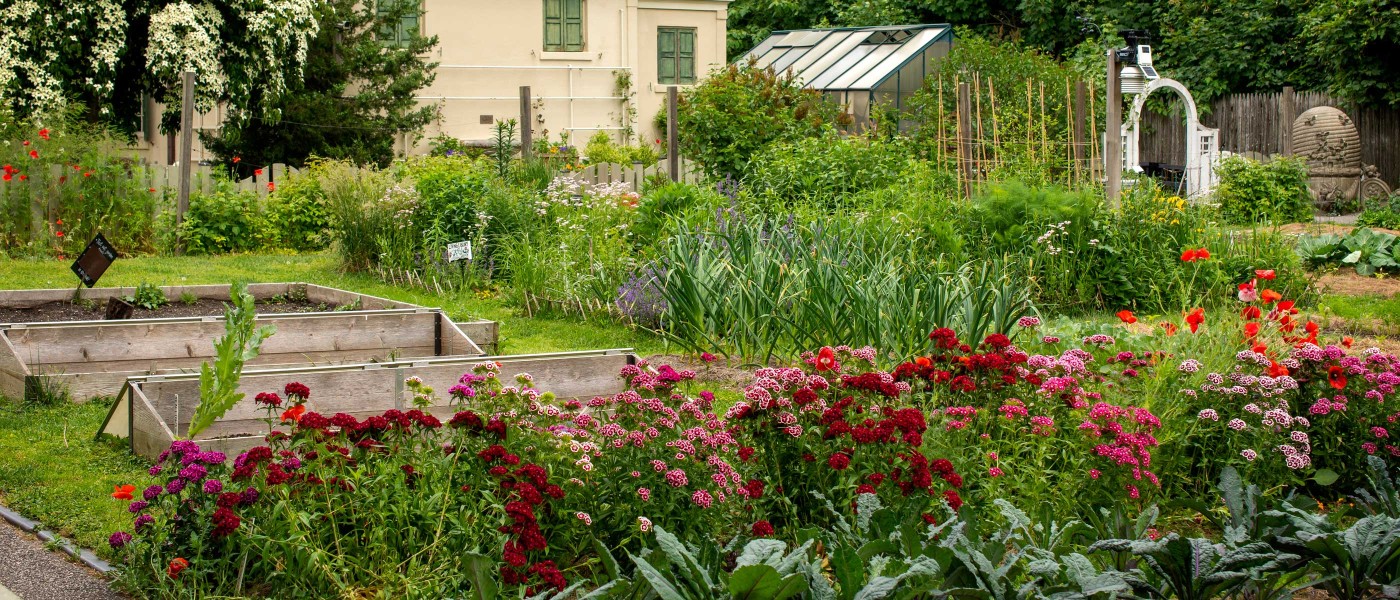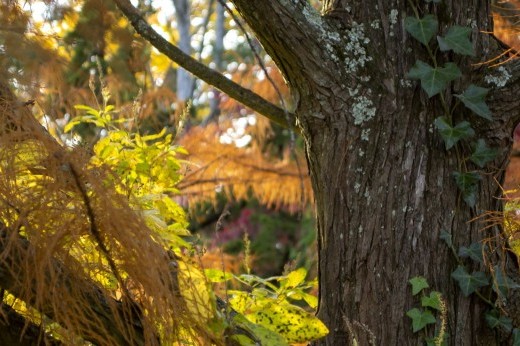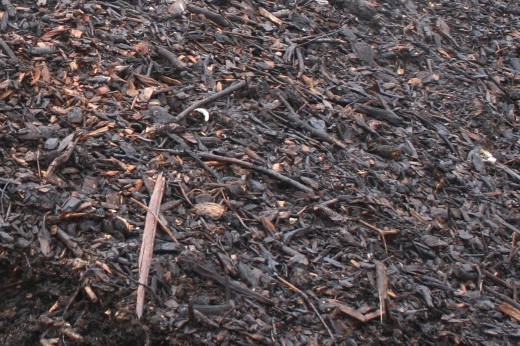Bob Lewis has spent nearly 50 years working in local food systems—a lifelong passion that began, in some ways, during a childhood spent at Brooklyn Botanic Garden.
As an elementary schooler, he planted his first seeds in the Children’s Garden. “For the last 40 or 50 years, I’ve been working with farmers,” Lewis recalled. “And I could say to them, ‘I was a farmer once.’”

Lewis cofounded New York City’s storied Greenmarket Farmers Market program in 1976, along with city planner and architect Barry Benepe (father of Brooklyn Botanic Garden president Adrian Benepe). He went on to the New York State Department of Agriculture and Markets, where he worked for decades to support farmers and promote equitable access to fresh food across the region.
Lewis’s relationship with Brooklyn Botanic Garden spans several generations and directions. His grandmother Tennie Prusslin, who lived across the street on Washington Avenue, visited daily in the 1960s and ’70s. Community activist and Magnolia Tree Earth Center founder Hattie Carthan, for whom a magnolia tree at BBG is dedicated, was Prusslin’s close friend and Lewis’s godmother; Carthan was an inspiration for Lewis’s push to revive Arbor Day citywide. More recently, Lewis’s son Jordan was married at the Garden this past spring.
Today, Lewis works as an advisor for the nonprofit Fulton Market Association in lower Manhattan. We spoke to him about his memories of Brooklyn Botanic Garden, and his career supporting rural and urban agriculture.
When did your family first visit Brooklyn Botanic Garden?
My parents and grandparents first visited the Garden before I was born in 1946. When I was young, my grandmother frequented the Garden constantly. Back in those days, the Garden allowed people to enter through a revolving gate without paying an admission fee, and she walked there from her apartment across the street almost every day. She painted, and some of her landscapes were inspired by the Garden.
My own personal history of connecting with nature began at Brooklyn Botanic Garden. As a kindergartener in the 1950s, I remember playing in the streams, on the bridges, getting lost. At the time we were living on a leafy block in Crown Heights, on Union Street and Brooklyn Avenue.
In elementary school, I began to participate in Children’s Garden programming. The Children’s Garden has remained in my mind as a forerunner of so many other things, including the big revival in community gardens and school gardens that we’re seeing today.
I have vivid memories of the spring workshops indoors in the old greenhouses, and sitting with other young people, learning about seeds, soil, the seasons. I remember getting to experience the process of planting, and applying what I learned in the greenhouse to my own plot—feeling proud to see the results of harvesting beans, harvesting peas, harvesting carrots, harvesting radishes.
All of this had an impact on me, clearly, in terms of a connection to the earth. There’s a link between the Garden and my college studies in geology, my graduate studies in ecological planning, and ultimately my work in food systems and regional agricultural development and revival.
You helped found Greenmarket in New York City, which is such an important part of the city today. How did that come about?
With a degree in ecological planning in hand, I started pounding the pavement looking for work, and by utter serendipity walked into the office of urban planner Barry Benepe.
He brought me into his firm, and I began working on town planning projects in the Hudson Valley, and thoroughfare and highway tree planting contracts with the city of New York. One thing led to another, and we came up with the notion that a farmers’ market might help the region address both the constant threat to farms and farmland in exurban areas and the loss of high-quality food in cities.


This coincided with Barry’s own personal interest in the revival of public spaces in American cities. Robert Moses’s legacy meant that these spaces had been given over to automobile transport, in the name of supposed progress.
We were able to open up the first farmers’ market in July of 1976. It was an exciting moment in reconnecting urban and rural regions of New York—and ultimately, this has progressed over the last nearly 50 years, and reached so many more people than we could have ever imagined. Today, Greenmarkets are only one part of the large number of markets that other nonprofits and groups were able to develop all across the city.
What did you do after that?
After two years at Greenmarket, I realized that if we were going to really have a systemic effect, something had to happen at the level of public policy and initiative. To me, that meant government, so I went to work at the State Department of Agriculture.
I spent the next two years evolving and expanding the Greenmarket program, and formalizing some components of it, like the advisory committee of farmers that exists to this day. And from 1978 till 2013, I had a base of operations to create statewide programs and actions, like the revival of Arbor Day in New York.

My career evolved to the point where I could say that the State Agriculture Department was playing a leading role in reviving these connections that benefited upstate dramatically, as well as the city dramatically. The volume of sales that resulted were very significant in saving and sustaining hundreds and hundreds of farms, and encouraging people who might have left agriculture to stay on as the next generation—and attracting new immigrant farmers, which is another initiative that I began in the late 1990s.
I eventually became involved in urban agriculture, farm-to-school initiatives, and other ways of providing better access to healthy food, like the citywide school gardens program that we launched in 2010.
And all I can say is, there’s so much more to do.
These are the kinds of programs that I strongly feel government should play a leading role in. Without government, they could not have been fostered in the same way. Brooklyn Botanic Garden, as well, and everything it accomplishes, is sustained by both generous donors and the public sector. We need all of these components.
Your son recently got married at the Garden. Any memories you’d like to share?
I’ll tell you, first of all, the decision to do the wedding at the Garden was our son’s and daughter-in-law's. But I was so happy that they decided to do this.

The wedding brought up everything that I’ve mentioned, and more. It made me think of the philanthropist Alfred T. White, a housing reformer in the late 19th century and the director of Public Works for Brooklyn. He initiated an early experiment in affordable housing that includes the building I live in today in Cobble Hill. He was also one of the principal benefactors behind the creation of Brooklyn Botanic Garden.
These large public spaces in cities are so important, and all of this added to the pleasure of being at this beautiful wedding.
I thought about how lucky I am to live in Brooklyn, and to have had the Garden growing up. And all the things I did later have been focused on helping others have the same experience.



